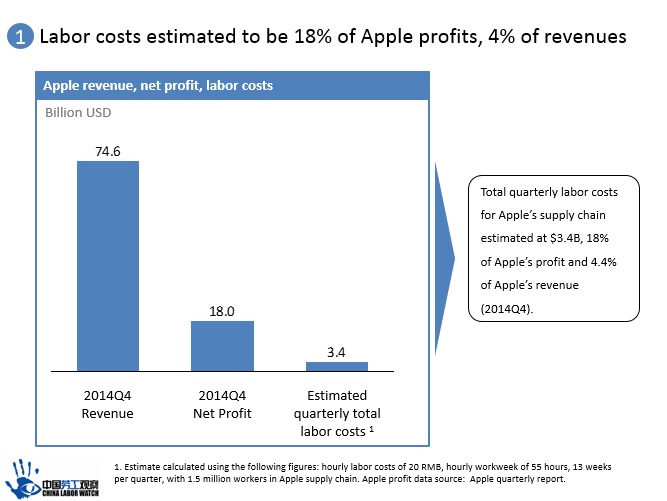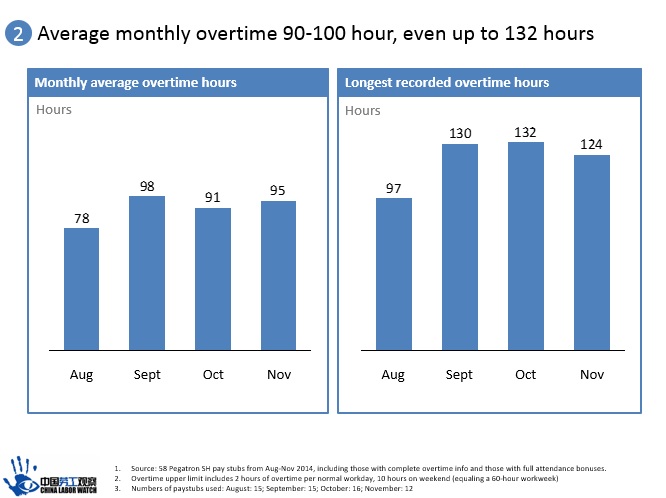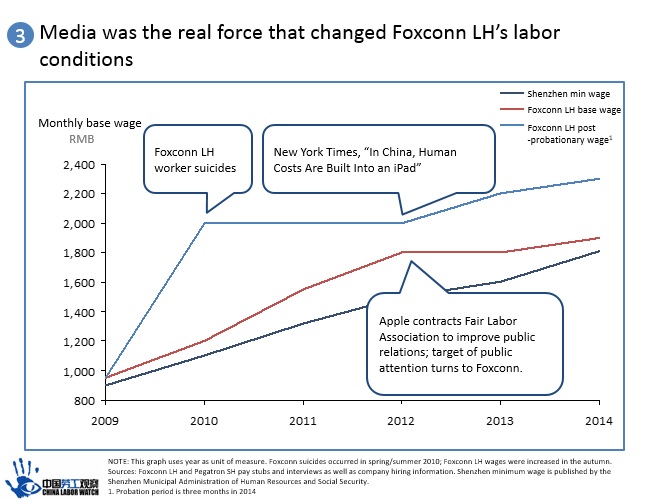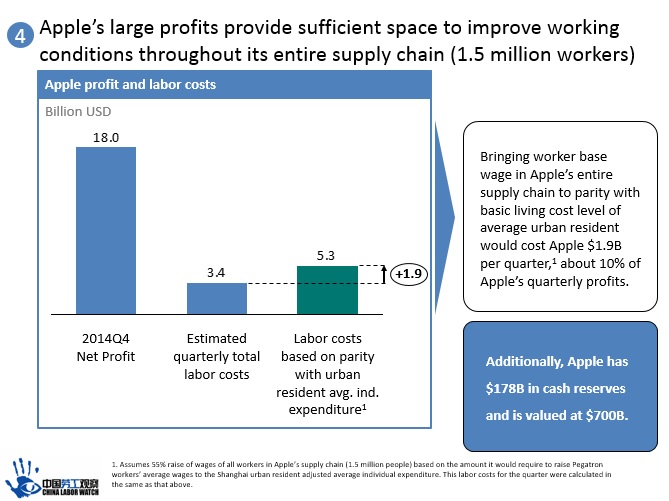Analyzing Labor Conditions of Pegatron and Foxconn: Apple’s Low-Cost Reality
REPORT SUMMARY
1. Apple consistently suppresses labor costs by shifting production to cheaper manufacturers
- While Apple earns huge profits, labor costs are relatively low.
- Apple shifted production orders from Foxconn to cheaper Pegatron in order to offset Foxconn’s rising labor costs.
- In 2014, Pegatron Shanghai still possessed about an 8% cost advantage over Foxconn Longhua, translating into a $61 million annual advantage at just one of many Pegatron factories that service Apple.

2. Apple is unable to effectively monitor its supply chain; Pegatron still has excessive working hours
- Apple constantly claims that it is monitoring suppliers’ compliance with Apple labor standards.
- Research of Pegatron workers’ pay stubs reveals average of 60+ working hours per week, 52% of workers completed more than 90 hours of overtime per month, even working as many as 132 hours of overtime.
- Workers desire overtime because their base wages are too low; base wages cannot meet the local living standard.

3. It is media attention that has improved labor conditions, not Apple’s self-monitoring
- Media reports in 2010 and 2012 influenced changes in Foxconn’s labor conditions.
- Apple responded to the reports by hiring a third-party organization to improve public relations, though important promises remain unfilled.
- Receiving little attention previously, Pegatron’s excessive working hours reduced quickly after a 2014 BBC report.

4. Apple must take more responsibility for improving labor conditions
- Apple has sufficient profits to improve workers’ treatment.
- Apple executives make public commitments to workers, yet poor labor conditions remain unresolved.
- Earning three-fifths of the profit in the industry, and with $178 b in cash reserves, if Apple doesn’t reform labor conditions, who will?

Methodology:
CLW collected 96 pay stubs from Pegatron workers between January 6 - 30 this year. Every pay stub we obtained was included in the analysis. The pay stubs included workers from 18 different departments and 25 different sections. Sections are subordinate organizationally to departments; each section can have up to hundreds of workers. Below a section are (from large to smallest units): teams, squads, and production lines. A line is the base organizational unit and typically includes tens of workers.
In addition to gathering pay stubs, CLW conducted dozens of interviews with Pegatron workers.
Attachments:
Attachment A--scanned versions of Pegatron Shanghai pay stubs:
Attachment B--calculations (zipped Excel files):